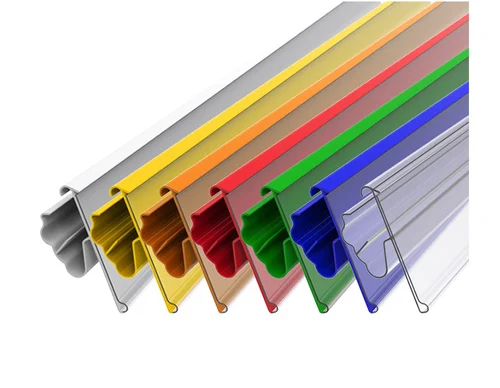Data networking equipment in aircraft typically includes routers, switches, and hubs that connect the various onboard systems and devices, such as the passenger entertainment system, the cockpit displays, and the flight management system. These systems allow for the communication and sharing of data between the different devices and systems on the aircraft.
They also provide a connection to the internet, allowing passengers to access the internet during flight. The equipment must be designed to withstand the unique environment of an aircraft, including vibration, temperature changes, and altitude. They must also meet strict safety and reliability standards set by regulatory bodies such as the Federal Aviation Administration (FAA) and the European Aviation Safety Agency (EASA).
In addition to the standard networking equipment, aircraft may also include specialized systems such as satellite communications systems, which allow for communication and data transfer while the aircraft is in flight. These systems use either geostationary or non-geostationary satellites to provide a connection to the ground and may include antennae, modems, and other hardware.
Aircraft Security
Another important aspect of data networking equipment in aircraft is security. As with any network, aircraft networks must be protected against unauthorized access and hacking attempts. This includes implementing firewalls, intrusion detection systems, and other security measures to protect the aircraft’s systems and the personal information of passengers.
In modern aircraft, the data networking equipment is also connected to the aircraft’s avionics system, allowing for the exchange of data between the avionics and other systems. This can include data such as flight plans, weather information, and navigation data. It also enables the aircraft to be controlled remotely, or by a single pilot, with the aid of automation.
Overall, the data networking equipment in aircraft plays a critical role in ensuring the safe and efficient operation of the aircraft, as well as providing passengers with a comfortable and connected experience during flight.
Maintenance Systems
Another important aspect of data networking equipment in aircraft is the integration with the aircraft’s maintenance systems. This allows for the monitoring of various systems and components on the aircraft in real time, providing valuable information to the maintenance crew to help them identify potential issues before they become critical. The data collected can also be used to analyze the performance of the aircraft over time, and to make informed decisions about when to schedule maintenance or replace components.
Additionally, data networking equipment in aircraft can also be used to support the aircraft’s operational performance. For example, the use of advanced data analytics can help airlines improve their fuel efficiency, reduce maintenance costs, and increase the utilization of their aircraft. This can be achieved by monitoring various systems and components on the aircraft, analyzing the data, and making adjustments to the aircraft’s operation to optimize its performance.
Modern Aircraft
In short, the data networking equipment in modern aircraft is not only responsible for communication and data transfer but also for the aircraft’s operational performance, safety, and maintenance. It plays a vital role in ensuring the aircraft’s efficiency, reliability, and passenger comfort.
Electronic display components in aircraft include a variety of screens and displays that are used to present information to pilots and passengers. These can include primary flight displays (PFDs), navigation displays, engine displays, and passenger entertainment displays.
Primary flight displays (PFDs) are electronic displays that provide pilots with critical information such as airspeed, altitude, attitude, and heading. They are designed to be highly legible and easy to read, even in low-light conditions. PFDs can be either cathode ray tubes (CRT) or liquid crystal display (LCD) screens.
Navigation displays are used to present navigation information to pilots, such as the aircraft’s position, flight plan, and weather information. They can also be used to display navigation maps and charts. Engine displays present information about the aircraft’s engines, such as fuel consumption, temperature, and RPM.
Passenger Entertainment Displays
Passenger entertainment displays are used to provide passengers with in-flight entertainment, such as movies, music, and games. These displays can be either overhead screens or individual seat-back screens. They are typically LCD or LED screens and are designed to be viewed from a wide angle.
In addition to these displays, electronic flight bags (EFBs) have become increasingly popular in modern aircraft. EFBs are electronic devices that are used by pilots to access and display flight information, such as charts, flight plans, and weather information. They can also be used for navigation, communication, and flight planning.
All of these electronic displays must meet strict safety and reliability standards set by regulatory bodies such as the Federal Aviation Administration (FAA) and the European Aviation Safety Agency (EASA). They must also be designed to withstand the unique environment of an aircraft, including vibration, temperature changes, and altitude.
Components Integration
Another important aspect of electronic display components in aircraft is their integration with the aircraft’s systems. For example, the PFDs and navigation displays are typically connected to the aircraft’s avionics system, allowing them to display real-time information about the aircraft’s position, flight plan, and weather conditions. This allows pilots to make informed decisions about the aircraft’s operation, and navigate the aircraft safely and efficiently.
The electronic display components are also integrated with the aircraft’s data networking equipment, allowing for the exchange of data between the different systems on the aircraft. This can include data such as flight plans, weather information, and navigation data. The electronic displays also enable the aircraft to be controlled remotely, or by a single pilot, with the aid of automation.
Operational Performance and Support
In addition to providing information to pilots and passengers, electronic display components can also be used to support the aircraft’s operational performance. For example, the use of advanced data analytics can help airlines improve their fuel efficiency, reduce maintenance costs, and increase the utilization of their aircraft. This can be achieved by monitoring various systems and components on the aircraft, analyzing the data, and making adjustments to the aircraft’s operation to optimize its performance.
In short, electronic display components play a critical role in aircraft operation by providing pilots and passengers with real-time information, supporting the aircraft’s operational performance, and enabling automation and remote control of the aircraft. They must meet strict safety and reliability standards, and be designed to withstand the unique environment of an aircraft.
Read More: zoombazi.com





